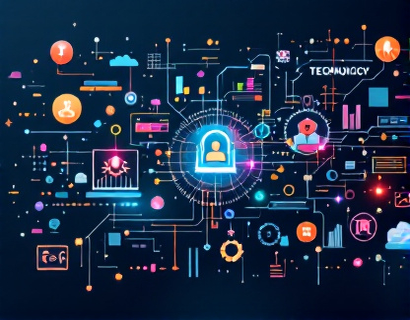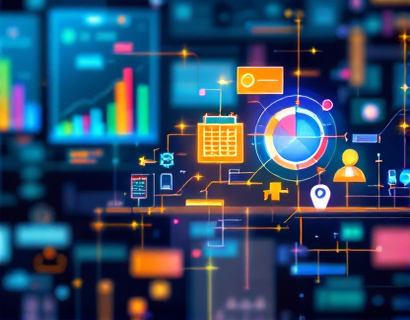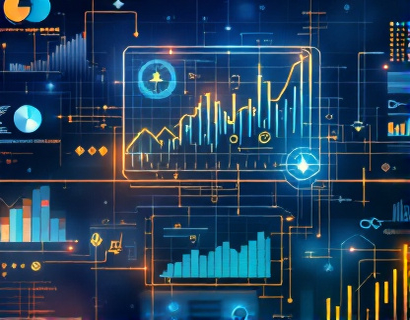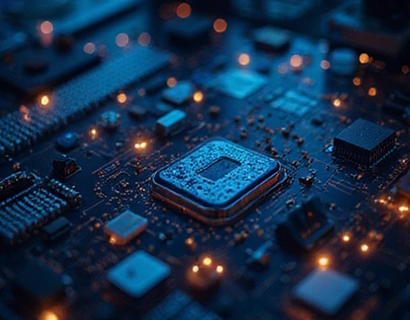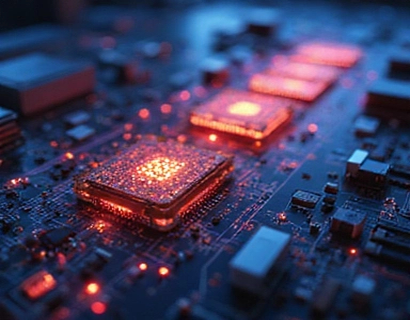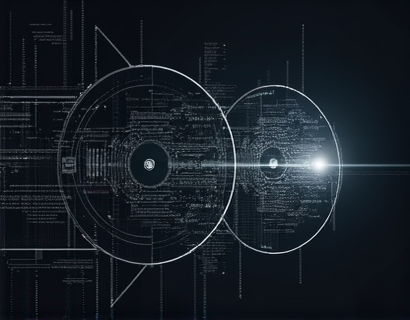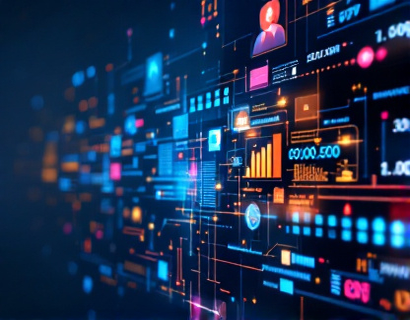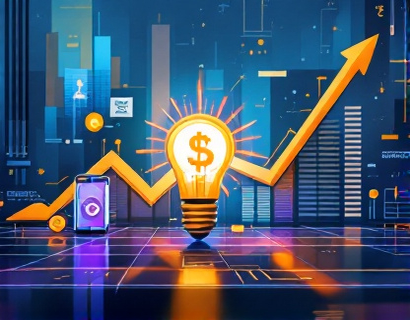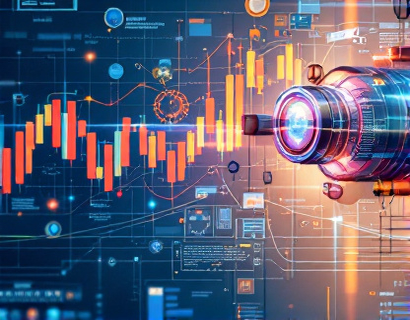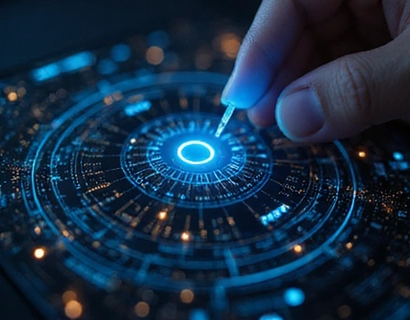Decentralized Transformation: Harnessing AI and Crypto for Next-Gen Digital Solutions
The intersection of cryptocurrency and artificial intelligence (AI) is giving rise to a new era of digital innovation, characterized by decentralized applications and AI-driven services that are redefining user experiences and engagement. This transformation is not just a technological shift but a fundamental change in how we interact with digital platforms and services. For tech enthusiasts, early adopters, and digital innovators, understanding this convergence is crucial for navigating the future of digital solutions.
The emergence of decentralized applications, or dApps, represents a significant departure from traditional centralized models. These applications run on blockchain networks, which are decentralized by nature, ensuring that no single entity has control over the entire system. This decentralization brings numerous benefits, including enhanced security, transparency, and resilience against censorship and failures. The integration of AI into these decentralized frameworks further amplifies their potential, enabling more intelligent, adaptive, and user-centric services.
One of the key advantages of AI in decentralized systems is its ability to process and analyze vast amounts of data in real-time. This capability is particularly valuable in dApps that require dynamic decision-making and personalized user experiences. For instance, AI algorithms can analyze user behavior and preferences to offer tailored recommendations, optimize resource allocation, and enhance security measures. In a decentralized environment, these AI-driven insights can be shared and utilized collectively, fostering a more collaborative and efficient ecosystem.
The synergy between AI and blockchain technology is also driving advancements in smart contracts. Smart contracts are self-executing contracts with the terms of the agreement directly written into code. When AI is integrated into smart contracts, they become more sophisticated and capable of handling complex logic and decision-making processes. This combination allows for the creation of autonomous systems that can operate with minimal human intervention, reducing costs and increasing reliability. For example, AI-enhanced smart contracts can automatically adjust parameters based on real-time data, ensuring optimal performance and compliance with predefined rules.
Another area where AI and decentralization are making waves is in the realm of decentralized finance (DeFi). DeFi platforms leverage blockchain to provide financial services such as lending, borrowing, and trading without intermediaries. AI plays a crucial role in enhancing the functionality and safety of these platforms. Machine learning models can predict market trends, detect fraudulent activities, and optimize trading strategies. This not only improves the user experience but also makes financial services more accessible and inclusive, breaking down barriers to entry for a broader audience.
Beyond finance, the combination of AI and decentralization is transforming various sectors, including healthcare, supply chain management, and content creation. In healthcare, AI-driven dApps can analyze medical data to provide diagnostic insights and personalized treatment plans, all while maintaining patient privacy through blockchain-based data storage. In supply chain management, AI can optimize logistics and inventory management, ensuring transparency and efficiency. For content creators, decentralized platforms powered by AI can offer monetization models that reward creators based on engagement and value delivered, rather than relying on centralized gatekeepers.
The development of decentralized AI models is another exciting frontier. Traditional AI systems often rely on centralized data repositories and computing resources, which can lead to issues such as data bias and privacy concerns. Decentralized AI models, on the other hand, distribute data and computation across a network of nodes, enhancing data privacy and reducing the risk of single points of failure. This approach also promotes data ownership, as users retain control over their data and can choose how it is used. AI models trained on decentralized data sets can be more representative and less prone to bias, leading to fairer and more accurate outcomes.
The technical underpinnings of this transformation involve several key technologies. Blockchain provides the decentralized infrastructure necessary for dApps, ensuring secure and transparent transactions. Smart contracts enable automated and trustless interactions, while AI algorithms bring intelligence and adaptability to these systems. Additionally, advancements in machine learning, particularly in areas like federated learning and homomorphic encryption, are crucial for building AI models that can operate effectively in decentralized environments. These technologies work together to create a robust and scalable ecosystem that can support a wide range of innovative applications.
For developers and innovators, the opportunities presented by the convergence of AI and decentralization are vast. The ability to build applications that are both intelligent and decentralized opens up new possibilities for creating value and solving complex problems. Frameworks and platforms like Ethereum, Polkadot, and Solana are leading the way in providing the necessary tools and infrastructure for developers to build and deploy these advanced applications. These platforms offer scalable solutions for executing smart contracts and running AI models, making it easier than ever to harness the power of decentralized AI.
However, the journey towards a fully decentralized and AI-driven digital landscape is not without challenges. One of the primary hurdles is the technical complexity involved in integrating AI with blockchain technologies. Developers need a deep understanding of both domains to create effective and secure applications. Additionally, scalability remains a significant concern, as current blockchain networks may struggle to handle the computational demands of advanced AI models. Research and development in areas like sharding, layer 2 solutions, and more efficient AI algorithms are essential to overcoming these challenges.
Another challenge is the regulatory environment. As decentralized applications and AI technologies evolve, governments and regulatory bodies are beginning to take notice. Ensuring compliance with existing laws while advocating for a regulatory framework that supports innovation is a delicate balance. Transparency, user privacy, and data protection are key considerations that must be addressed to gain widespread adoption and trust in these new digital solutions.
Despite these challenges, the potential benefits of a decentralized AI-driven digital transformation are immense. Enhanced security, increased transparency, and improved user experiences are just the beginning. As more organizations and individuals recognize the value of this approach, we can expect to see a surge in innovation and adoption. The future holds the promise of a more equitable, efficient, and intelligent digital world, where the power of AI and the resilience of blockchain work hand in hand to create transformative solutions.
In conclusion, the merging of cryptocurrency and AI is paving the way for a new generation of digital solutions that are more secure, transparent, and user-centric. Decentralized applications and AI-driven services are at the forefront of this revolution, offering unprecedented opportunities for innovation and growth. For those interested in exploring this exciting frontier, the next steps involve staying informed about the latest developments, experimenting with existing platforms, and contributing to the community to help shape the future of decentralized AI.








